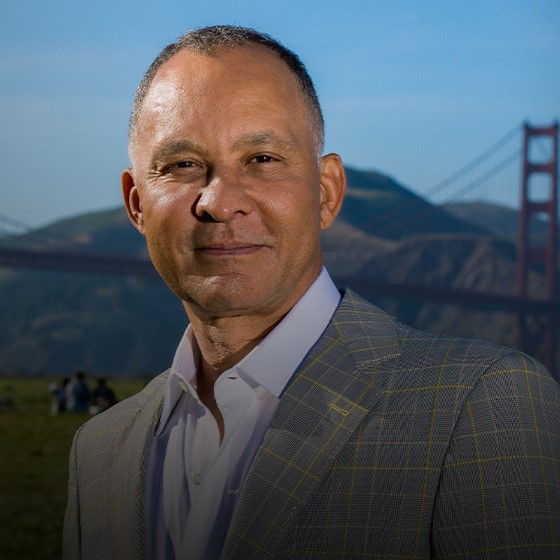Teenage gynecomastia, the enlargement of breast tissue in adolescents, affects over half of boys during puberty. While often temporary, it can cause discomfort and self-consciousness. This article covers its causes, symptoms, and how to manage it, helping you understand and address this common issue.
Key Takeaways
- Gynecomastia is a common condition that affects 50–60% of adolescent boys. It is typically temporary but can persist and cause discomfort if not addressed.
- Hormonal imbalances, particularly elevated estrogen levels relative to testosterone, are the primary contributors to gynecomastia during puberty, with weight management playing a significant role.
- Treatment options range from non-surgical methods, such as emotional support and medications, to surgical intervention for persistent cases, emphasizing the importance of a tailored approach for each individual.
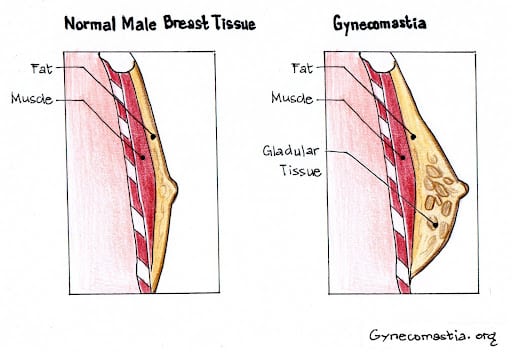
Diagram of normal male breast tissue and one with gynecomastia
Understanding Gynecomastia in Adolescent Males
A benign condition known as gynecomastia can cause males to develop breast tissue similar to female breast tissue during adolescence, causing an evident increase in breast size. This pubertal phenomenon affects approximately half or more of boys during their teenage years. It initiates around age 10 and peaks at ages 13 to 14. Gynecomastia aligns with the Tanner stages, reflecting different levels of maturation during puberty.
As boys navigate through puberty and experience various bodily changes, such as growing pubic hair and other secondary sexual characteristics, many will also encounter this temporary enlargement of male breast tissue. The majority will notice that symptoms have subsided by the time they reach age 17 due to hormonal balances achieved after puberty.
Yet, for some individuals, what is termed persistent pubertal gynecomastia occurs when there’s no natural resolution within the expected period, leading potentially to prolonged discomfort and issues with self-esteem. Persistent breast enlargement in such cases may require surgical intervention, especially if associated with pain or significant psychosocial issues. Hence, identifying whether the condition is transient or lasting becomes vital because enduring cases might require medical attention for symptom relief and improved life quality.
The clinical features associated with gynecomastia include soft glandular tissue beneath the nipple-areolar complex, which can be felt upon examination. This mobile tender mass may range from mild palpable breast material, contributing insignificantly, to severe cases where substantial psychosocial distress ensues from pronounced chest protrusions. These scenarios indicate that immediate healthcare evaluation should be conducted for potential treatment options.
Definition and Prevalence
Gynecomastia is a condition characterized by the enlargement of breast tissue in males. It can occur at any age but is most common during puberty. The prevalence of gynecomastia varies widely, ranging from 4–69% of palpable breast tissue in adolescent males. According to a study, up to 70% of males in early to mid-puberty experience gynecomastia due to normal hormonal changes. In adult males, the prevalence of gynecomastia is estimated to be around 65%.
Causes and Hormonal Imbalances in Breast Tissue
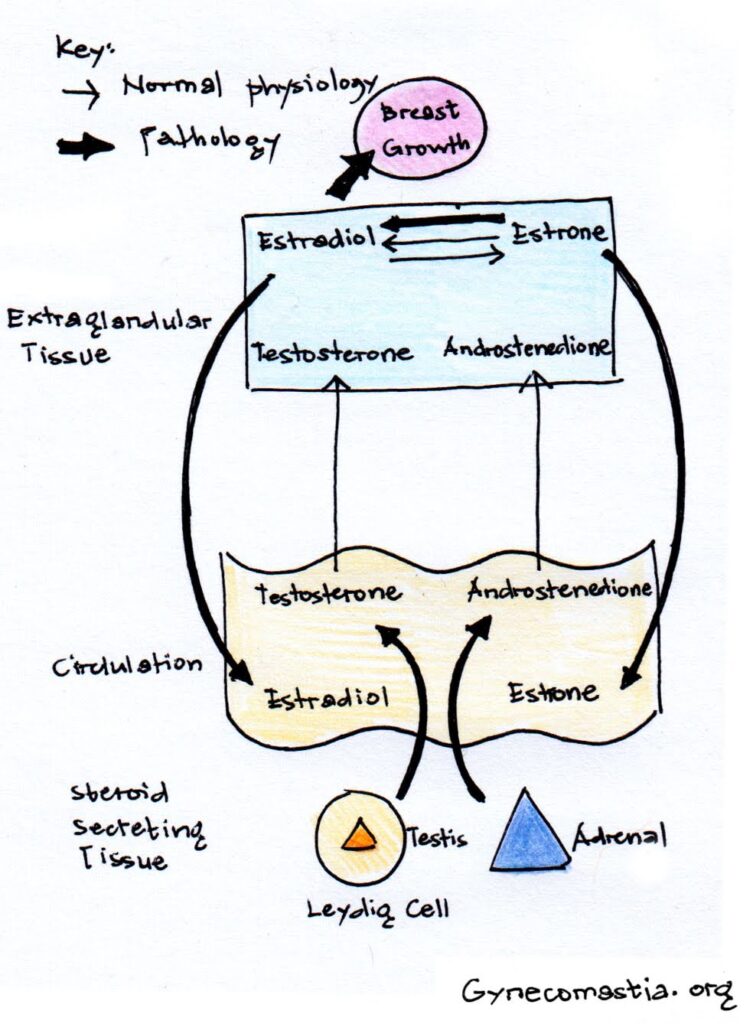
Chart showing hormone imbalance during puberty.
Hormonal fluctuations, especially the imbalance of estrogen and androgen levels, are closely associated with gynecomastia. When hormone levels shift during puberty, there can be an overabundance of estrogen compared to testosterone, which promotes the growth of breast tissue. This process may lead to severe gynecomastia.
Inherited disorders, such as Klinefelter syndrome, have been identified as contributors to hormonal imbalances that result in gynecomastia. A history of persistent gynecomastia within families suggests a genetic factor might play a role in its development. Conditions leading to elevated estrogen or diminished testosterone production—such instances include primary or secondary hypogonadism—are instrumental factors influencing the emergence of this condition. Laboratory tests may be ordered to measure serum testosterone and two pituitary hormones, including luteinizing hormone and follicle-stimulating hormone, as part of assessing the causes of gynecomastia.
Understanding that natural hormonal changes, along with inherited issues, often underpin cases of gynecomastia during puberty is crucial for effective interventions. Recognizing and comprehending the hormonal basis underlying this disorder underscores its complexity and the imperative need for specifically tailored treatment approaches.
Various factors can cause Gynecomastia, including hormonal imbalances, certain medications, and genetic conditions. An imbalance in estrogen to androgens tissue levels is postulated as a major cause of gynecomastia. Secondary causes of gynecomastia in adolescents are relatively uncommon, accounting for less than 5% of cases. These can include conditions like congenital anorchia, Klinefelter’s syndrome, testicular feminization, hermaphroditism, adrenal carcinoma, chronic liver disease, primary hypogonadism, secondary hypogonadism, testicular tumors, hyperthyroidism, renal disease, and malnutrition. Certain medications, such as spironolactone, ketoconazole, and cimetidine, can also cause gynecomastia.
Symptoms and Diagnosis of Breast Pain
Adolescent gynecomastia, also called pubertal gynecomastia, often manifests with distinguishable symptoms that are straightforward to detect. Typical indications consist of mild discomfort or sensitivity in the chest region, heightened sensation in the nipples, and a palpable lump below one or both nipples. Treatments like tamoxifen can address symptoms like pain and breast enlargement, providing relief and reducing the size of breast tissue. This mass is usually pliable, movable, and sensitive around the nipple-areolar complex.
In diagnosing adolescent gynecomastia, healthcare professionals require extensive physical examination. During this evaluation, they will scrutinize the dense breast tissue for its distinct attributes and search for any indicators that may point to underlying diseases. Given that gynecomastia might develop in one or both breasts, it underscores why a bilateral assessment is critical.
To differentiate between conditions like breast cancer and other potential issues from adolescent gynecomastia, diagnostic imaging, such as mammograms, could be employed alongside blood tests, which analyze hormone concentrations including testosterone, estradiol, and prolactin. For mild occurrences, handling typically involves monitoring coupled assurances, especially when a spontaneous resolution of the condition is anticipated.
Classification of Gynecomastia
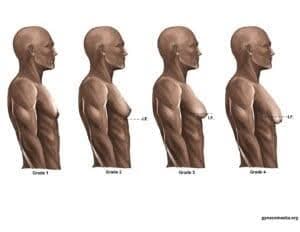
Images depicting the stages of gynecomastia, from Grade 1 with puffy nipples to Grade 4 with excess skin.
Gynecomastia can be divided into two types: prepubertal and non-pubertal. Pubertal gynecomastia is a common condition that affects up to 70% of boys during puberty. It typically resolves on its own within one to three years for 75–90% of adolescents. Non-pubertal gynecomastia is less common and can be caused by hormonal imbalances, certain medications, and genetic conditions.
Impact of Weight on Gynecomastia
The amount of body fat or adipose tissue and weight substantially influence the presence of excessive body fat in males. Excessive fatty tissue can lead to heightened estrogen levels, which can lead to obesity in the breast. Obesity typically increases estrogen, which stimulates testosterone to become more dominant. Thus, a strengthening loop begins, where increased body fat accentuates the symptoms associated with gynecomastia, highlighting the importance of effective weight management as part of the treatment plan.
By shedding excess weight, one may see an enhancement in testosterone levels that work against estrogen’s influences. Nevertheless, even persistent efforts at losing weight might not be sufficient to remove all symptoms related to gynecomastia if residual glandular tissue is present. While reducing one’s weight can significantly mitigate symptom intensity, it does not guarantee total resolution, particularly when there is substantial glandular involvement.
Adhering to a nutritious diet and consistently engaging in physical exercise are beneficial actions toward managing and potentially lessening the severity of gynecomastia symptoms. Targeting a healthy BMI enables individuals to curb hormonal imbalances effectively while fostering enhanced general health conditions. Recognizing how closely linked factors like body weight and instances or exacerbation rates concerning this condition prove vital when formulating efficient interventions aimed at sustainable amelioration.
Non-surgical Treatments
A variety of non-surgical interventions exist to address the symptoms of gynecomastia and enhance one’s quality of life. These measures encompass not only emotional support and the use of specialty garments like compression tops but also certain pharmaceutical treatments. The psychological toll that pubertal gynecomastia can take on adolescents underscores the importance of providing them with adequate emotional care during management.
Compression Garments
Compression shirts can significantly improve body image by producing a more contoured chest profile, which could bolster a teenager’s self-esteem. These strategies are most beneficial when integrated within an overall regimen that includes physical measures like clothing adaptations, psychosocial support, and adherence to healthy lifestyle habits. Prompt attention, along with an all-encompassing strategy, is essential in managing gynecomastia effectively while diminishing its potential adverse effects on affected individuals’ lives.
Lifestyle Changes & Self-Care
When addressing teenage gynecomastia, lifestyle changes and self-care practices can significantly manage symptoms and enhance overall well-being. A balanced diet and regular exercise are fundamental components that can help reduce body fat and potentially alleviate the appearance of gynecomastia. Physical activities like aerobic exercise and strength training can stimulate testosterone production while reducing estrogen levels, promoting a healthier hormonal balance.
Adopting a nutritious diet rich in lean proteins, whole grains, fruits, and vegetables can further support hormonal regulation and weight management. Avoiding processed foods and those high in sugar and unhealthy fats can prevent weight gain, which could exacerbate fatty breasts. Additionally, staying hydrated and maintaining a consistent sleep schedule are crucial for overall health and hormonal stability.
Beyond physical adjustments, addressing emotional and psychological aspects is equally important. Building a strong support network of family and friends can provide comfort and encouragement during this challenging time. Seeking guidance from mental health professionals can also offer strategies to cope with any self-esteem or body image issues that may arise due to severe gynecomastia.
Incorporating mindfulness practices, such as meditation or yoga, can help manage stress and improve mental resilience. These activities promote relaxation and can reduce anxiety, contributing to a more positive outlook on life. By integrating these lifestyle changes and self-care practices, adolescents can better navigate the challenges posed by gynecomastia and improve their quality of life.
Pharmacological Treatment Options
In cases where gynecomastia is persistent and leads to discomfort or feelings of self-consciousness, medical professionals may recommend anti-estrogen drugs. The treatment of pubertal gynecomastia often involves medications like tamoxifen and raloxifene, which have shown efficacy and safety in clinical trials. Tamoxifen, known for its selective estrogen receptor modulating capabilities, has proven effective in resolving roughly 80% of instances among recent and tender occurrences. Therapeutic administration of androgens may be utilized to counterbalance the influence of estrogen on breast tissue development.
Individuals suffering from enduring symptoms of gynecomastia may find relief through pharmaceutical interventions. Various medications, including tamoxifen, clomiphene, raloxifene, danazol, anastrozole, and testolactone, have been administered with different results. Gynecomastia is particularly prevalent among prostate cancer patients, as prostate cancer treatment, especially hormonal therapies like antiandrogens, can lead to this condition. Among these options, its proven safety record distinguishes tamoxifen and minimal adverse effects.
Such drugs operate either by obstructing the receptors for estrogen or impeding the synthesis of this hormone to curb breast tissue proliferation. Prompt intervention can alleviate associated emotional and psychological distress in patients with gynecomastia, significantly enhancing life quality. Although drug therapy can be beneficial in managing symptoms, it typically yields better outcomes when applied swiftly in instances involving slight to moderate breast enlargement.
Subsequent sections will provide a more comprehensive exploration of two principal pharmacological strategies: using agents that block estrogen and those based on enhancing male hormones (androgens). By addressing hormonal imbalances at the core of gynecomastia development, these treatments present focused remedies aimed at effectively controlling the condition’s manifestation.
Estrogen Blockers
Selective estrogen receptor modulators (SERMs), such as tamoxifen, are integral in addressing gynecomastia by impeding estrogen’s impact on breast tissue. By attaching to and occupying the estrogen receptor, tamoxifen disrupts estrogen’s growth-stimulating influence, thus curtailing breast tissue expansion.
Although these medications prove beneficial, they can lead to side effects like erectile dysfunction, diminished sperm count, testicular shrinkage, and nausea. Due to its effectiveness in shrinking breast size, with a relatively low rate of serious complications associated with its use. Tamoxifen therapy is considered fundamental in managing gynecomastia.
Research indicates that treating gynecomastia with tamoxifen shows promise, although more extensive randomized controlled studies are required for confirmation. Estrogen blockers have significant potential for adolescents dealing with enlarged breast tissue, as they counteract both excessive production and activity of estrogen, effectively improving symptoms related to this condition.
Androgen Therapy
Androgen therapy focuses on reestablishing hormonal equilibrium by elevating testosterone levels to neutralize the impact of surplus estrogen in adolescent boys. This treatment is particularly advantageous during puberty, when shifts in hormone levels may cause a discrepancy between estrogens and androgens, potentially leading to gynecomastia.
To effectively manage gynecomastia attributed to hormonal imbalance, common methods include administering testosterone through injections or applying topical gels. Despite their effectiveness, these treatments carry possible adverse reactions, such as acne, mood alterations, and heightened health hazards, that require vigilant supervision by medical professionals.
By targeting the underlying issue of hormone irregularities, androgen therapy offers substantial relief for young individuals suffering from gynecomastia. Such therapeutic strategies highlight the necessity for individualized care plans tailored to each person’s specific hormonal profile. A board-certified endocrinologist oversees these treatments.
Surgical Solutions for Persistent Pubertal Gynecomastia
In some adolescents, the continuous enlargement of breast tissue coupled with severe emotional distress may warrant surgical treatment. The primary reasons for such a procedure include ongoing gynecomastia despite monitoring, breast pain, or profound psychological impact. Persistent breast enlargement after a period of observation is also a key criterion for considering surgical treatment. Surgical correction is frequently pursued for aesthetic purposes to reinstate the typical contours of the breasts and relieve mental anguish.
The most effective approach to alleviating symptoms associated with significant glandular tissue when non-surgical methods fall short is through gynecomastia surgery. Subcutaneous mastectomy is the prevalent technique in surgically correcting this condition by precisely excising surplus breast tissue.
Customizing surgical intervention based on individual severity levels of gynecomastia and general health conditions remains crucial. When the condition persists beyond two to three years, optimal treatment becomes preferred, offering enduring outcomes that significantly enhance quality of life.
Surgical Techniques
Gynecomastia surgery aims to reduce breast enlargement by removing glandular tissue, resulting in a more contoured chest. The choice of surgical technique largely depends on the severity of the condition. Liposuction-assisted mastectomy, which combines liposuction with the surgical removal of breast tissue, is often favored for patients experiencing mild to moderate gynecomastia.
For those with a more pronounced form of the condition, methods that combine resecting breast tissue and liposuction yield better results. A newer option, known as the “pull through” technique, specifically addresses grade 1 and some cases of grade 2 gynecomastia using a small incision that minimizes scarring.
The most advanced stages of gynecomastia—grades 3 and 4—are typically treated with double incision mastectomy due to its effectiveness in these situations. All surgical techniques aim to effectively remove excess tissue while ensuring aesthetically pleasing outcomes tailored to meet the unique needs of each patient.
Post-surgical Recovery
The post-operative phase is a significant component in the management of gynecomastia. Recovery duration can differ, with methods like liposuction-assisted mastectomy that typically result in shorter recovery times compared to more invasive surgeries like skin excision that require a longer healing period.
Recovery from gynecomastia surgery takes between 4 and 6 weeks, though this time frame may fluctuate based on individual circumstances. Patients are advised to wear compression garments for at least 4 to 6 weeks during recuperation. These garments reduce swelling and support recovering tissues to ensure the best possible surgical outcomes.
Adherence to Dr. Delgado’s aftercare instructions is imperative for ensuring a seamless recovery process. These instructions involve managing discomfort through prescribed pain medications, refraining from intense physical activity, and attending scheduled follow-up consultations for progress assessment. By diligently following these guidelines, most teenagers who undergo this treatment can experience significant improvements in both their physical appearance and psychological well-being.
Psychological and Emotional Support
The profound psychological and emotional toll of gynecomastia on adolescent males is immense. These young men may suffer from considerable shame and mental strain, which can significantly disrupt their overall sense of well-being and capacity to engage socially. The presence of even slight manifestations of gynecomastia can be the source of intense psychological discomfort, underscoring the need for prompt attention to these issues.
Adolescent boys grappling with this condition often encounter a drop in self-confidence, as well as difficulties in social settings. An obsession with body image and dietary habits might develop, regardless of whether they exhibit symptoms typical of recognized eating disorders. Offering emotional support becomes essential to helping them manage these hurdles effectively. Parents play an instrumental role by being attentive listeners and providing steadfast encouragement, especially when their sons feel embarrassed or humiliated.
In certain instances where significant distress is linked to the condition, pharmacological options could help mitigate the stress experienced by these individuals. Yet, a multifaceted strategy—encompassing supportive dialogue, therapeutic guidance, and potential medical intervention—frequently proves most beneficial in resolving both physical signs and psychological burdens associated with gynecomastia. Such comprehensive care is pivotal for adolescents striving towards enriched life satisfaction and enhanced mental wellness.
Patient Education and Support for Teens with Gynecomastia
Teenage gynecomastia can be a challenging experience, significantly impacting a young person’s self-esteem and body image. Educating patients and their families about this condition is crucial in alleviating anxiety and promoting understanding. Comprehensive education should encompass the nature of gynecomastia and its causes, symptoms, and potential treatment options.
Healthcare providers play a pivotal role in patient education by offering clear, age-appropriate explanations about the hormonal changes that lead to breast tissue enlargement. They should reassure teens that gynecomastia is a common, often temporary condition and emphasize that most cases resolve without intervention. Providing information on the expected course of gynecomastia and the importance of monitoring changes can help reduce unnecessary worry.
Support groups and counseling services can be beneficial, offering teens a platform to share their experiences and feelings with peers facing similar challenges. This communal support can foster a sense of belonging and reduce feelings of isolation. Mental health professionals can also help address any psychological effects, such as anxiety or depression, that may arise due to body image concerns.
It is essential to encourage open communication between teens and their families. Parents should be informed about the condition and its implications to provide empathetic support and guidance. They can help their children navigate the emotional aspects of gynecomastia by fostering a supportive home environment where discussions about body changes are normalized.
Incorporating educational resources, such as brochures, videos, or online content, can further enhance understanding and accessibility of information. These resources should be tailored to the adolescent audience and use relatable language and visuals to engage them effectively.
By prioritizing patient education and support, healthcare providers can empower teens with gynecomastia to manage their condition with confidence, promoting a holistic approach to their well-being.
A few helpful forums are gynecomastia.org and Reddit.
Consult in Person or Virtually With Dr. Delgado
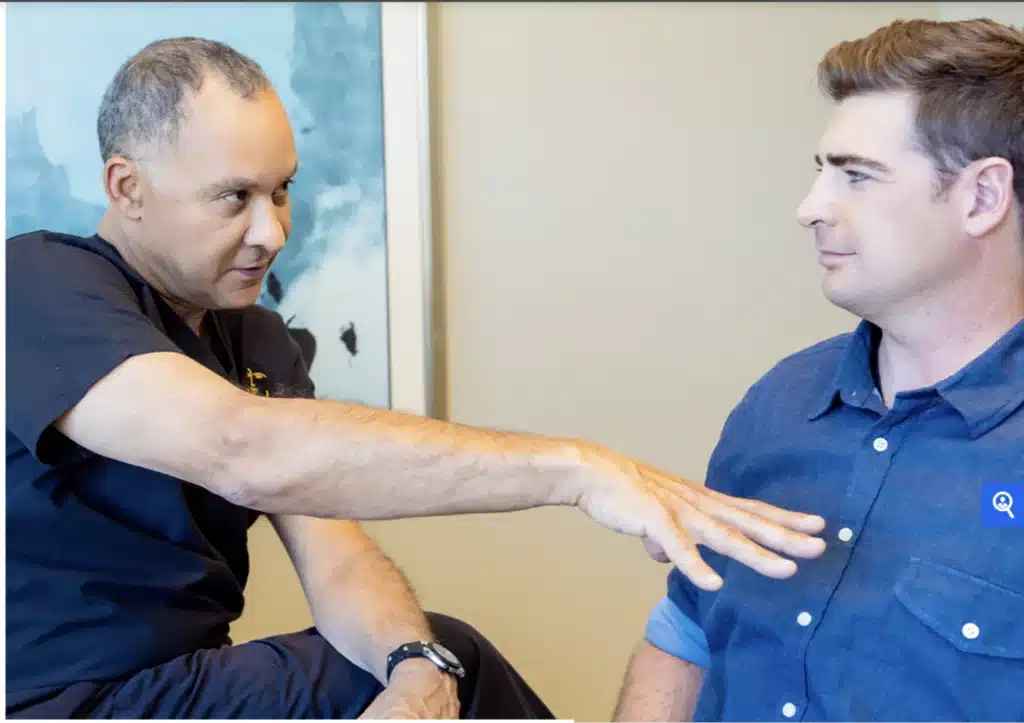
Dr. Delgado consults a gynecomastia patient.
Dr. Delgado is a renowned expert in gynecomastia treatment. He offers both in-person and virtual consultations to provide personalized care for adolescents with this condition. His approach is comprehensive, focusing on understanding each patient’s unique needs and tailoring treatment plans that address both the physical and psychological aspects of gynecomastia. With a wealth of experience in surgical and non-surgical interventions, Dr. Delgado ensures that every individual receives the most effective and compassionate care possible.
| Diplomate |
DELGADO JR., MIGUEL ANGEL450 Sutter Street, Suite 2433 165 Rowland Way, Suite 300 |
| Certification
Status |
CERTIFIED |
| Continuous Certification in
Plastic Surgery History |
Initial Certification 11/09/1990 – Valid indefinitely |
| Continuous Certification Participation |
Summary
In essence, dealing with gynecomastia in teenagers requires an intricate understanding of the reasons behind it, its manifestations, and available treatment methods. This condition is prevalent among adolescents and can be attributed to hormonal fluctuations typical during puberty. Though many instances may subside on their own over time, there are cases where breast enlargement persists, leading to substantial physical discomfort and psychological strain.
A variety of therapeutic interventions exist for this condition, from supportive measures like emotional reassurance and wearing compression garments to medical treatments like tamoxifen or hormone therapy. For those suffering from ongoing breast enlargement, surgical options like subcutaneous mastectomy are reliable choices offering significant improvements. Ensuring a smooth post-operative recovery alongside psychological support is vital for optimal results and long-term contentment.
The cornerstone of effectively handling gynecomastia is prompt detection, tailoring treatment strategies individually, and providing robust support. With these components in place, affected adolescents have the potential to overcome difficulties associated with gynecomastia and confidently lead wholesome lives.
It is important to consult a healthcare professional for appropriate treatment options.
Frequently Asked Questions
What does stage 1 gynecomastia look like?
Stage 1 gynecomastia is characterized by a slight or mild enlargement of the breast glands without excess skin, which is also called “puffy nipples.”
Is it normal for a 15-year-old boy to have gynecomastia?
Yes, it is normal for a 15-year-old boy to experience gynecomastia, as around half of males between 12 and 16 will encounter it. Typically, this condition resolves itself within two years without medical treatment.
What type of specialist may teenagers be referred to for gynecomastia evaluation?
Teenagers may be referred to an endocrinologist to evaluate gynecomastia. Endocrinologists specialize in hormone-related conditions, ensuring a comprehensive assessment of any underlying hormonal imbalances.
What are some common symptoms of gynecomastia in teenagers?
Gynecomastia in teenagers commonly presents as slight soreness or tenderness in the chest area, increased nipple sensitivity, and the presence of a small lump beneath one or both nipples. Recognizing these symptoms is important for seeking appropriate guidance.
Are there FDA-approved medications specifically for treating gynecomastia?
There are no FDA-approved medications specifically for treating gynecomastia; any medications used are currently off-label.

